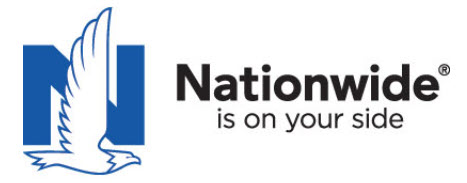7 ways to Pay for Long Term Care
without traditional long term care Insurance
. . . Maybe 8

An Insurance for Business Article
Before you ask a client, "How do you want to pay for long term care?" Ask these questions, first:
- "If you were to get sick or injured and need assistance for an extended period of time, where would you prefer to receive that care?" Second,
- "What impact will the need for that extended care have on your income?"
Your client can pay for long term care with:
1. Short Term Care Health Insurance
2. 3 in 1 Life Insurance with a Long Term Care Extension
3. 2 in 1 Life Insurance with Critical and Chronic Illness Riders
4. Annuity Hybrid with a Long Term Care Multiplier
7. Self-Funding









Q: Why would a business owner buy long term care insurance,
when the business could buy it for them?

Yours, with our thanks for answering 2 quick LTC questions.
Pay for Long Term Care Article continued
Let's get number 8 out of the way, right away. As an Adamsson Associate, you are all about showing your client's their options. Please consider number 8 a last resort. It's called a Life Settlement. Your client could sell a life insurance policy for cash, if it has any cash value. There are legitimate third parties who can help your client. In fact, we have one.
Basically, the older or sicker your client is, the more valuable the life settlement becomes. Why? Well, the sooner your client dies, the sooner their death benefit can be collected by the life settlement company. But, your client goes out the door, everyday, knowing someone wants them . . . dead? Your client. Obviously, I have a bias. Having said that,
KEEP IN MIND, ADAMSSON ASSOCIATE, THAT NONE OF THESE OPTIONS ARE PERFECT ON THEIR OWN. GIVEN THE COSTS AND UNKNOWN DURATION OF AN EXTENDED CARE EVENT, CONSIDER A COMBINATION, ESPECIALLY FOR YOUR NUMBER 7'S.
1. Short Term Care Health Insurance- Ideal for older ages, those with health challenges or coverage gaps
A short Video
Description
This is an alternative to standalone LTCi (long term care insurance,) for up to 1 year of coverage. It's regarded as a supplemental, gap coverage.
The Upside
These products are available for older ages. The benefits can payout without affecting Medicare benefit eligility. Some have cash payout for home care (no bills/receipts,) otherwise, known as indemnity plans. Short term health insurance is easier to qualify for based on health or height/weight restrictions. And, many have a 0-day elimination period.
The Downside
In most cases, the benefit period is limited to one year for facility, and one year for home care. And, short term health insurance is not available in all states. In my opinion, certain states consider this type of coverage to be a threat to the Affordable Care Act's provisions . You will hear this insurance referred to as "junk insurance."
2. Life Insurance Hybrid with LTC Extension (3 in 1)- Ideal for those who are funding with assets or income
A short Video
Description
This solution is intended to protect your client's assets from an extended health care event, retain max flexibility. It's ideal for those who are funding with assets or income. We say 3 in 1 because it combines the:
- tax-free death benefit of the life insurance, with the
- ability to advance a portion of that death benefit for critical or chronic illness, and
- a long term care benefit rider that will pay for long term care, without reducing the death benefit of the base life insurance policy,
The Upside
There are flexible payment options, guaranteed premiums, and cash value. They may offer cash payout, with no need to submit invoices and receipts for reimbursement.
They may offer tax advantages for individuals, business owners, and HSA/HRA/MSA funding is allowed.
The Downside
If your client is funding this solution with assets, say a 1035 exchange, there is a cost to that. Also, there are not the same tax advantages for business owners on the life insurance portion of the premium, that there are for the long term care premium.
3. Life Insurance Hybrid with LTC/CI Rider (2 in 1)- Ideal for younger ages with more of a life insurance need
Description
We say 2 in 1 because this solution combines life insurance protection with the ability to advance a portion of the death benefit for a qualifying critical, or chronic illness. It can be funded with a monthly premium, or a single premium with a multiplier.
Your client has the ability to maximize their death benefit, while retaining moderate flexibility, making it ideal for younger folks with families and, consequently, more of a need for life insurance protection.
The Upside
Your client retains liquidity and flexibility, with no premium increase to worry about. They are not paying for benefits they don't need. The accelerated death benefit rider is usually included at no cost. And, should your client qualify for an advance on their death benefit, a lump sum payment is received, without income tax liability, because it is not income, rather death benefit from the life insurance policy. Also, if the policy is funded upfront in a single premium, the insurance company will multiply that, increasing the account value, in some cases doubling it, depending on the age of the insured.
The Downside
If LTC is needed, death benefit reduced by the advance. Although the LTC rider is without cost, usually premiums on the life insurance are higher. Benefits may be determined at time of claim based on the size of the policy, and how long your client has had the policy, and whether or not they have dipped into the cash value of the base life insurance policy, previously.
4. Annuity Hybrid with LTC Multiplier- Ideal for older ages or those who have health challenges or are funding with assets
A short Video
Description
Your client can re-position an existing asset to provide immediate tax-free LTC coverage. This way to pay for long term care is ideal for older ages, or those who have health challenges, or are funding with existing assets.
The Upside
LTC benefits are received tax-free. The underwriting makes it easier to qualify based on health or height/weight challenges. Your client can use a 1035 exchange to transfer cash value from existing annuities and cash value life insurance that currently do not pay for long term care to fund these annuities that do allow LTC benefits to be paid, tax-free.
The Downside
This annuity hybrid solution requires lump sum funding, there are limited inflation protection options, fewer carriers, and is not available in all states. These solutions typically are a reimbursement model, with a 90 day elimination period.
5. Indexed Annuity- Ideal for those who are uninsurable with a 20+ year horizon
A short Video
Description
This solution provides long term care funding options for those with health concerns.
Ideal for those who are uninsurable with a 20+ year horizon.
The Upside
There is very limited or no medical underwriting with an indexed annuity. Your client stands to realize market-like growth potential, without market-like losses, or management fees. Some of these solutions offer extra income to pay for long term care.
The Downside
Full benefits are not available day one. Your client will be taxed on gains. Also, there is no care coordination, it's just dollars, and there are no tax advantages for business owners.
6. Home Equity Conversion (Reverse Mortgage)- Ideal for Client age 62 or older who has substantial equity in their home
Description
A reverse mortgage, otherwise known as a home equity conversion, is another long term care funding option for those with health and financial concerns.
The Upside
There are no monthly mortgage payments. Your client can usually free up to 40% of their home's equity value for discretionary cash flow to pay for long term care, directly, or for long term care insurance. Your client remains owner of the home, and can still sell the home at any time. They must continue to pay property taxes, insurance, and upkeep expenses. Your client, and their heirs, can never owe more on the home than what it is worth, based on government consumer protections.
The Downside
There are very limited options if your client is under age 62. The home must be their primary residence. And, depending on your clients health needs, there is the potential that no equity will be available for the next generation.
7. Life Settlement- Ideal for those who are skeptical of insurance
As an Adamsson Associate, you are all about showing your client's their options. With a Life Settlement, your client could sell a life insurance policy for cash, if it has any cash value. There are legitimate reasons for life settlements, and legitimate third parties who can help your client with a life settlement. In fact, we have one.
Basically, the older or sicker your client is, the more valuable the life settlement becomes. Why? Well, the sooner your client dies, the sooner their death benefit can be collected by the life settlement company. But, your client goes out the door, everyday, knowing someone wants them . . . dead? Your client. Obviously, I have a bias. Having said that,
8. Self Funding- Ideal for those who are skeptical of insurance
Description
Your client maintains access to existing money, now. There is no claims process.
The Upside
Your client retains liquidity and flexibility. There are no premium increases to worry about, and they're not paying for unused benefits. Again, there is no claims process, only accounts that must be paid when payment is due.
The Downside
Your client has no health care plan, no care coordination. Everything is dollar-for- dollar, with no leveraging of insurance dollars. And, there are tax timing consequences that will take dollars away, that would otherwise pay for long term care.








